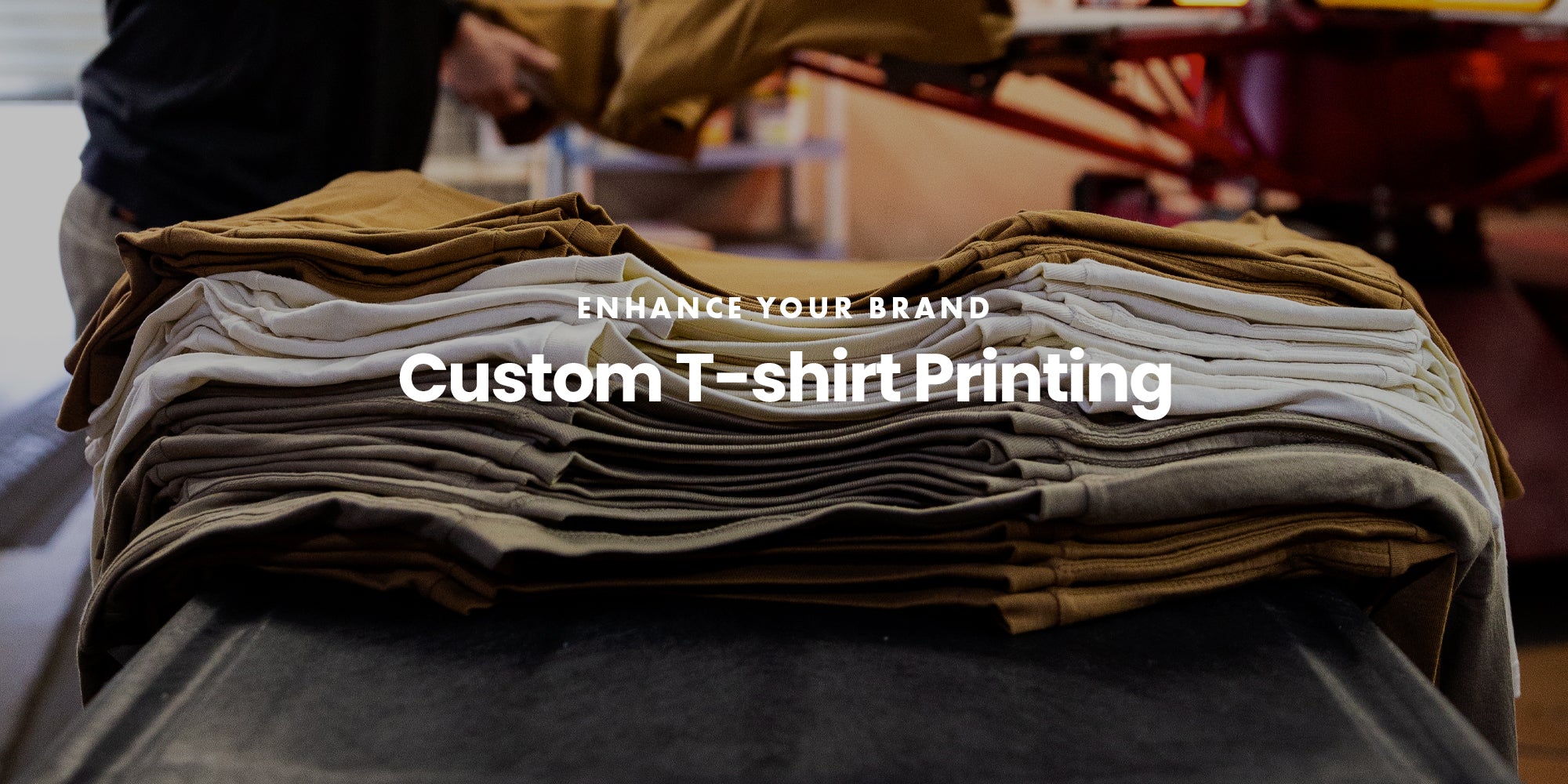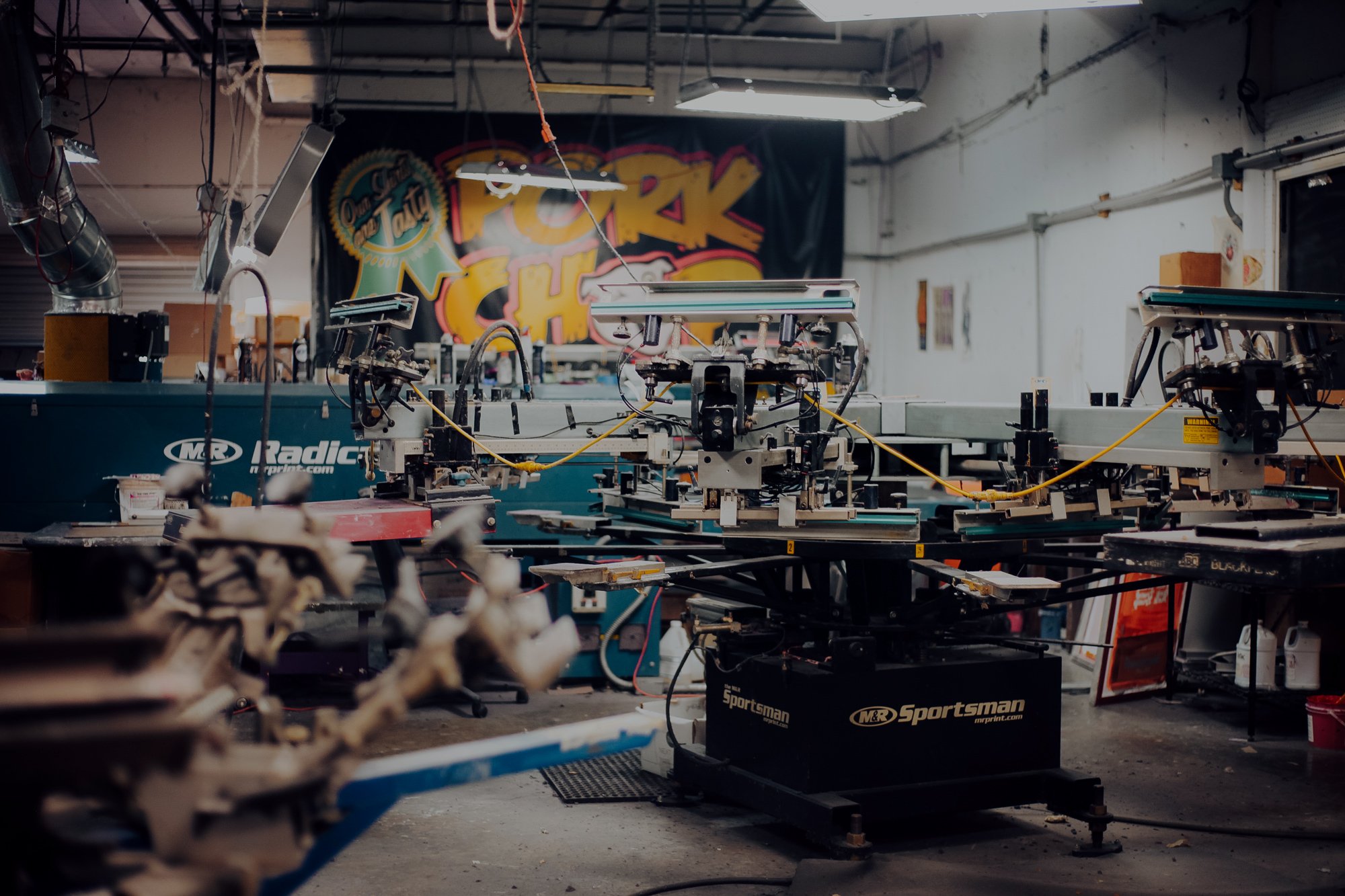Premium Screen Printing Kit for Business Startups
Display Printing Uncovered: Every Little Thing You Need to Find Out About Tee and Garment Printing Methods
Display printing is an interesting method that combines art with technique, using countless possibilities for imagination. All set to explore the vital elements that make display publishing an art form?
The Essentials of Screen Printing: Just How It Works
When you plunge right into display printing, you'll discover it's both an art and a scientific research. At its core, display printing includes producing a stencil, or display, that enables ink to pass through only in specific locations (screen printing kit). You start by selecting your design and preparing your display with a light-sensitive solution. As soon as you expose this emulsion to light, it sets, leaving your style as a negative room.
Placement the screen over the textile, then make use of a squeegee to press ink via the screen onto the garment. Each step is important, and mastering them will certainly elevate your screen printing skills, changing easy garments right into special, meaningful pieces.
Kinds Of Display Printing Methods
Once you understand the essentials of screen printing, it's time to check out the various techniques that can raise your styles. One prominent approach is standard display printing, where ink is pushed via a stenciled screen. This strategy is great for bold, vivid shades. There's water-based ink printing, which supplies a softer feeling and is environmentally friendly, however it needs a various technique to treating.
An additional option is plastisol printing, known for its longevity and vivid colors, making it a favored for numerous brand names. Experiment with halftone printing to develop slope effects and elaborate designs.
Essential Equipment for Display Printing
To accomplish stunning outcomes in display printing, having the best tools is essential. You'll require a durable screen printing frame, which holds the mesh that transfers your design onto the garment. Next, spend in top quality mops; these are important for applying ink evenly throughout the screen.
Choosing the Right Inks and Materials
When choosing inks and materials for screen printing, you require to consider the kind of ink that functions ideal for your project. Think of material compatibility to assure your layouts look last and great lengthy. Also, discover green ink options to make your printing process extra sustainable.
Kinds Of Screen Inks
Picking the ideal screen ink is essential for accomplishing vibrant, resilient prints that meet your job's needs. There are a number of kinds of display inks to take a look at. Plastisol ink is popular for its flexibility and ease of usage, offering superb color opacity on dark fabrics. Water-based ink, on the various other hand, uses a softer feel and is environmentally friendly, making it perfect for those seeking to decrease their ecological effect. Discharge inks eliminate color from the textile, leading to a soft, vintage appearance but call for particular handling. Specialized inks, such as metal or glow-in-the-dark, can include one-of-a-kind impacts to your designs. Evaluate your task demands and choose the ink that lines up best with your desired end result.

Textile Compatibility Considerations
Comprehending fabric compatibility is vital for attaining high-grade screen prints, particularly given that various products respond distinctively to numerous inks. Always test your inks on sample material to ensure they stick correctly and maintain shade stability. Additionally, maintain in mind that fabric weight and appearance can affect the last result, so selecting the best ink and material combination is crucial for your project's success.
Eco-Friendly Ink Options
Green inks are becoming a popular choice for screen printers that want to reduce their environmental effect while keeping high quality. When picking inks, take into consideration water-based inks, which are less hazardous and easier to cleanse up compared to traditional solvents.
In addition, look for inks made from renewable energies, such as soy or vegetable-based alternatives. By picking the right inks and materials, you'll not just develop spectacular layouts but also add to an extra lasting printing procedure. Make the switch, and your prints will reflect your dedication to the setting!
Preparing Your Design for Screen Printing

File Style Demands
To guarantee your style looks sharp and lively on material, you'll need to pay attention to submit layout needs for display printing. Begin with vector data like AI or EPS, as they can be scaled without shedding high quality. If you utilize raster images, choose for high-resolution documents, such as TIFF or PNG, ideally at 300 DPI. Avoid using JPEGs, as they can lose clarity when resized. Make sure your design has a transparent background to prevent undesirable white sides on your prints. Finally, maintain shade settings in mind; CMYK is basic for screen printing, so transform your RGB creates appropriately. By adhering to these standards, you'll set your artwork up for a successful print.
Color Splitting Up Strategies
Shade separation is an important action in preparing your style for screen printing, and mastering it can significantly improve your print top quality. You'll need to damage your design right into individual colors, as each shade needs a different display during printing. Begin by recognizing all the colors in your design and produce layers each. You can make use of software like Adobe Photoshop or Illustrator to isolate and separate colors successfully. Be certain to save each layer as a separate documents, usually in a format like TIFF or PSD. This accuracy not just assures precise shade representation however likewise simplifies the printing process. By paying focus to color splitting up, you'll attain professional and lively cause your screen-printed garments.
Resolution and Size
Achieving the best cause display printing begins with assuring your style has the best resolution and size. Preferably, your art work should be at the very least 300 DPI (dots per inch) for sharp, clear prints. Your last product may look amateur and pixelated. if you utilize reduced resolution.
When it comes to dimension, take into consideration the measurements of your print location. Design your artwork to match the final print size, preferably producing it in the actual dimensions you'll be publishing. By doing this, you'll stay clear of any type of unexpected scaling problems.
Always examine your design in both vector and raster formats. Vector graphics can be scaled without shedding top quality, making them optimal for screen printing. Preparing correctly will guarantee your style looks remarkable on every garment!
Step-by-Step Display Printing Process
Display printing is a dynamic process that permits you to create vibrant layouts on numerous surfaces. To get begun, you'll require a display, solution, and your chosen ink.
After rinsing the unexposed solution, your display prepares. Establish it up on your printing surface and straighten your garment beneath it. Put ink onto the display and make use of a squeegee to press the ink through the pattern onto the textile. Lift the screen thoroughly and let the print completely dry. Treat the ink using warmth to ensure longevity. That's it! You have actually effectively display printed your style.
Tips for Effective Screen Printing Projects
While you're diving right into your screen printing tasks, keep in mind that prep work is key to success. Beginning by collecting all your materials-- inks, garments, displays, and squeegees. A tidy office aids avoid undesirable mistakes, so clean before you start.
Following, validate your artwork is high-resolution and effectively sized for your garment. Check your display for appropriate exposure and clean it completely to avoid spots. When mixing your inks, comply with the supplier's standards to attain the appropriate consistency.
Throughout printing, apply even pressure with your squeegee for constant results. Do not rush; take your time to validate each print satisfies your standards. After printing, let your garments completely dry totally before managing or packaging them.
Last but not least, always maintain an example of your job for future recommendation. This method, you can assess your development and improve your techniques over time. Satisfied printing!

Regularly Asked Concerns
The length of time Does It Require To Set up a Screen Printing Work?
Setting up a screen printing work commonly takes about 30 mins to an hour. You'll prepare the displays, mix inks, and change journalism. The moment differs based upon intricacy and experience, so remain organized!
Can I Print on Various Fabric Keys In Making Use Of the Same Strategy?
Yes, you can print on various textile types making use of the very same technique, however you'll require to adjust your inks and setups. Some textiles take in ink in different ways, so experimenting guarantees the most effective results for each product.
What Prevail Mistakes to Avoid in Display Printing?
When display printing, prevent typical errors like utilizing the wrong ink, disregarding correct direct exposure times, or missing pre-press checks. Constantly evaluate your configuration and preserve tidy displays to guarantee top quality outcomes each time.
How Can I Appropriately Clean and Maintain My Screen Printing Devices?
To properly clean and keep your display printing equipment, you ought to on a regular basis clean displays with ideal solvents, examine mops for wear, and assure all tools are saved dust-free and dry. Consistency enhances and protects against costly fixings performance.
Is Screen Printing Eco-friendly Contrasted to Various Other Approaches?
Screen printing can be t-shirt printing much more environmentally friendly than various other methods, specifically if you make use of water-based inks and eco-conscious materials. By picking lasting supplies and methods, you minimize waste and minimize your impact on the planet.
Display Printing Uncovered: Everything You Need to Know Concerning T-Shirt and Garment Printing Techniques
At its core, screen printing entails developing a stencil, or screen, that enables ink to pass with just in specific areas. Setting the display over the material, after that utilize a squeegee to push ink through the display onto the garment. One preferred technique is typical screen printing, where ink is pushed through a stenciled display.When picking inks and materials for screen printing, you require to take right into account the kind of ink that works finest for your task.